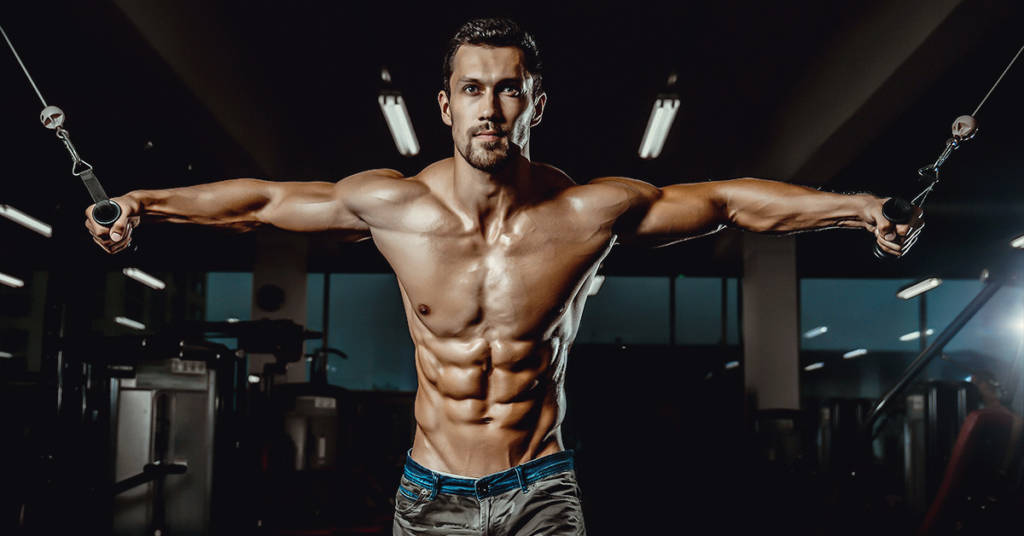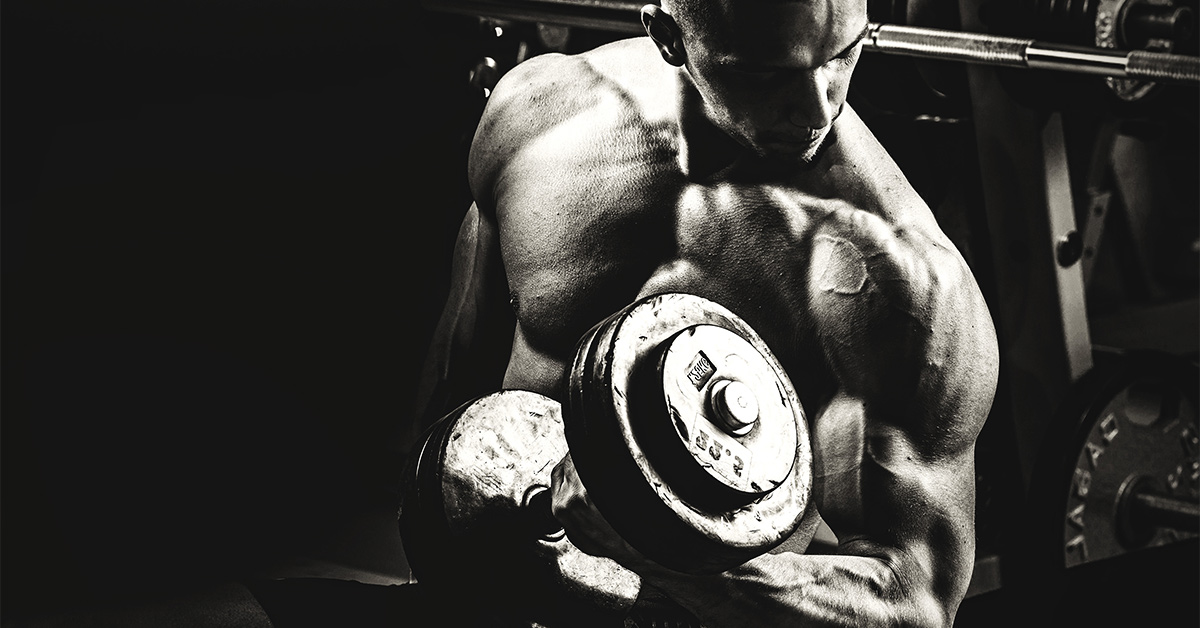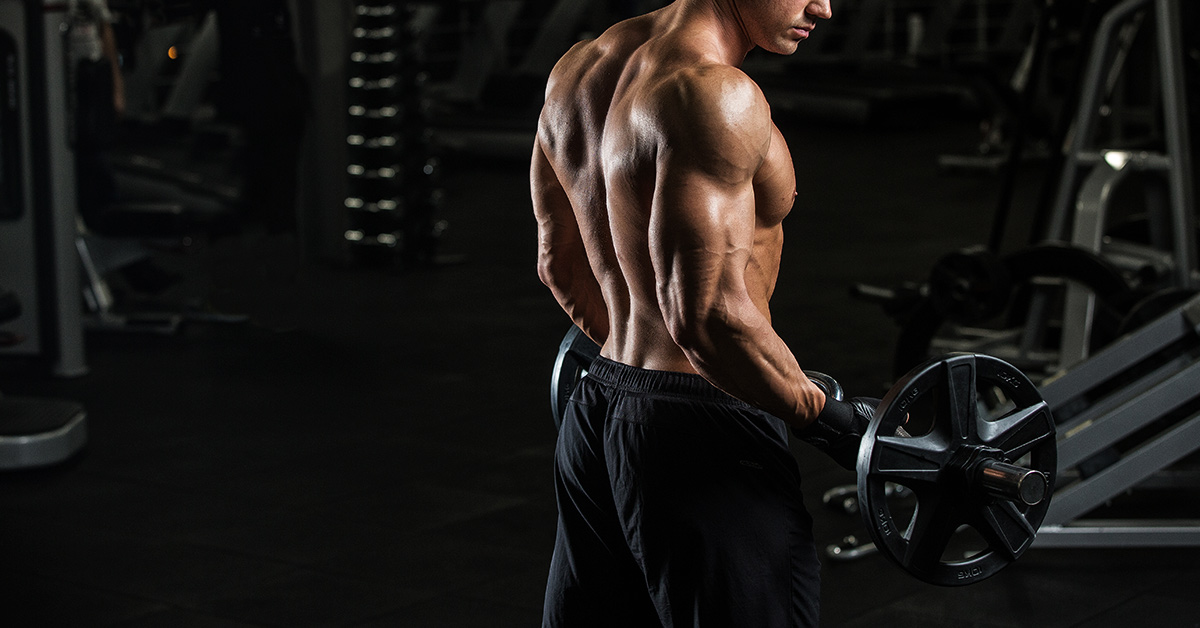
In my previous article on hypertrophy , I cautiously hinted at the fact that volume is not the most important factor in growth, just to get you used to that idea. A bit of kicking at a holy house, when you hear all the literature and all the trainers and trainees that have been read in somewhat. Still, I can make a good argument why volume itself is not the leading factor for hypertrophy. In any case, this is not the whole story.
What has made the story a bit more complex is the fact that apparently there are multiple forms of hypertrophy and that these different forms are apparently trainable with different train approaches. You can read more about this in the article about ‘ different forms of hypertrophy ‘. Many bodybuilders have been calling this for years and years, but the literature has now actually researched and found evidence for this.
In all the years that bodybuilding and strength training has existed (and there are already quite a few) there have been very diverse theories about which training approach was decisive for muscle growth. A clincher who was in charge for decades was ‘we don’t know what causes hypertrophy’ and thus a license for the most diverse schedules and approaches, from 1 set per muscle group per week to dropsets to super slow, etc.
WHAT HISTORY HAS ‘TAUGHT’ US …
It has long been thought that the damage caused to muscle tissue by training was the cause of muscle growth. The body recovered through supercompensation just a little more than it had before, and tadaa, muscle growth. Others think / thought that muscle pain meant that a good growth stimulus had been delivered. Both lines of thought do not seem correct, as there are known cases of growth without damage, and of damage without growth. Others thought that the pump, or ‘cell swelling’ was the reason for muscle growth. Everyone knows Arnold’s quote: “The pump feels better than cumming”.
According to some, the acute peaks in hormone levels due to training also have the honor of causing hypertrophy. Therefore “you should train rear muscle groups after doing legs”; the peak in growth hormone would cause more hypertrophy in the muscle groups that were trained after a large muscle group. Research also questions this.

THE CAUSE OF MUSCLE GROWTH
Nevertheless, it has been known for decades what causes muscles to grow, namely tension . The definition of tension according to the dictionary is, among other things, ‘tension’ and that is a good description of what tension actually means: The amount of tension in / on a muscle. Each muscle attaches with origin and insertion ( I’ve written about this in the past ) to different bones and when this muscle contracts the skeleton will move. Curling an arm with an empty hand takes less force and therefore produces less tension than curling an arm with a 10 kilo dumbbell in the hand. Before we continue, I would like to consider load and volume for a moment .
LOAD AND TENSION
Since tension is very difficult to measure and impossible to measure in the gym, we will have to use a different method. Everyone is already doing that unconsciously, namely with load. Load is nothing more than the number of kilos on the bar. However, our body does not have a built-in scale. For that reason, pounds don’t mean anything in and of themselves, otherwise a dumbbell fly would always be a much worse choice than a barbell bench press; after all, with a bench press you can easily push away more than 100 kilos. I have yet to meet the first person to perform a good fly with 50 kilos of dumbbells.
This is where tension comes in. The difference between these 2 exercises is easier to explain on the basis of tension. After all, with a fly, the moment arm is a lot larger than with a bench press, because the weight is a lot further from the point of rotation / joint. In addition, the load is distributed over much more muscle mass with a bench press than with a dumbbell fly.
VOLUME
In addition, I want to capture the definition of volume for a while before the story becomes a bit more technical.
Which workout has added more tension? (Let’s not be childish, I’m talking about the exact same exercise / movement pattern here)
- 2 sets of 100 reps on 100 kilos?
- 5 sets of 6 reps on 250 pounds?
The answer is this question is of course the first example (2 * 100 * 100 = 20,000; 5 * 6 * 250 = 7500).
If we ask the question differently, and ask which training provides the most muscle growth, giving the correct answer becomes a lot more difficult. When we use the ‘volume determines’ approach, we will never really have to train close to our 1RM for optimal hypertrophy. Often the nuance is given to remain at least above 60% 1RM, but the answer is still not very satisfactory. Under this approach, there is simply no place for heavy training in a hypertrophy program.
However, if this approach worked so well, why do we see people losing pounds and pounds of mass year after year as soon as they start cutting? In the article about different forms of hypertrophy you could read that built-up muscle protein is quite permanent. Apparently the usual training method (volume is leading) results more in sarcoplasmic hypertrophy; we have already seen that this form of hypertrophy is very ‘volatile’.

CONDITIONS FOR MUSCLE GROWTH
When the body is exposed to significant tension (and a significant volume of it), it will in turn trigger a signaling cascade, allowing muscle growth to occur if the conditions are present.
These 2 conditions are important for the further scope of this story. Most people know that a significant amount of volume is required.
The other condition is what this article is about, which is significant tension. Using only the volume rule, 100 times 1 kilo curling would have the same effect as 10 times 10 kilos curling. Or 1 time 100 kilos.
The latter example is kind of researched . This study shows that frequent 1RM attempts alone are not a good strategy for muscle growth, even if the attempts are successful. Apparently, at least a certain amount of volume is needed.
It is also clear that this tension must be of a certain intensity; this is exactly why cycling or running alone will not lead to no comments on the beach about skipping legdays.
So we now know the following:
- We must have tension of a certain intensity.
- of this significant tension we have to turn a certain volume.
Without going into too much detail about the control of muscles, muscle fiber type, etc. (since this article is now also getting quite long) I just want to leave it with the statement that full recruitment (all muscle fibers of a muscle participate in the movement) takes place from about 80 to 85% of your 1 RM. If you lift with a lower intensity, you will only get 100% recruitment after doing a number of repetitions.

EFFECTIVE REPS
And now we come to the heart of the story; Since the aim is to use and grow a muscle optimally, we want all muscle fibers in a muscle to cooperate and thus be loaded. With lower loads, this will not be from the 1 st repetition, but depending on the intensity, perhaps only after 10 reps. Only the reps that are subsequently made, so under full recruitment, will contribute well to a stressor and thus indirectly growth. Under full recruitment, let’s call these reps effective reps .
According to this explanation, the number of sets you play does not matter. The number of reps you do doesn’t even matter. All that matters is your effective reps. This could explain why many lose their ‘hard earned mass’ as soon as they start cutting, as I mentioned above in the example on cutting.
VOLUME IS NOT VOLUME
So the implication of this explanation is that there is definitely a substantial difference in volume. When 100 pounds is your 1 RM, there is certainly a difference between 4 sets of 6 reps at 85 pounds, or 4 sets of 12 reps at 42.5, even though the training volume is exactly the same.
As anyone who practices strength training knows, fatigue plays a role as the workout progresses. When rest is not complete, and you start the next set with built-up fatigue from a previous set, full recruitment will take place sooner than with a fully equipped system. Another reason to time your rest times too, as I described in a previous article ! After all, a shorter rest time can lead to fatigue still being present, so that in the 2 nd set for full recruitment, no 80-85% 1RM is needed, but perhaps only 70%.
This approach does not mean that training with less than 80% of your 1RM is completely pointless; it does mean that low-intensity cowardly workouts, which stay away from failure, and long rests to text or chat, will most likely leave a lot of progression untapped!
MAKE YOUR TRAINING COUNT!
The implication of this explanation may even be that when intensity and density during your workouts are both (too) low, there is a chance that you will literally not do 1 significant repetition, even if you run an entire schedule of 8 exercises, 4 each. sets of 12 reps.
This explanation can also be one of the reasons why research into different training methods almost always ends up ‘it doesn’t matter what you do’. Indeed, if a decent amount of effective reps are never achieved or measured during a workout, it will indeed make no difference how many reps or sets you do.
This is also the reason that studies in which a certain reprange is brought to failure (actual muscle failure) no difference appears to be found in hypertrophy and both groups seem to score equally well. After all, the number of significant repetitions will be almost the same. However, the low-intensity group needs a good number of reps before the first significant rep is made, while a study group who trains above 80-85% of their 1 RM from rep 1 is already doing significant reps. (Note: This certainly does not mean that every set must be to failure.)


